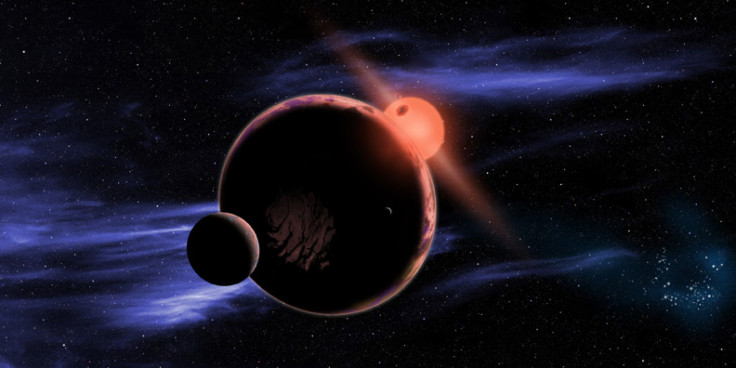Earth-Like Planets Probably 'In Our Own Backyard': Study

About six percent of the red dwarf stars in our galaxy have an Earth-size planet at approximately the right distance for liquid water to persist, scientists estimate in a new study. You wouldn’t take those numbers to Vegas, but for astronomers, they're very exciting odds.
“We thought we would have to search vast distances to find an Earth-like planet. Now we realize another Earth is probably in our own backyard, waiting to be spotted,” Harvard astronomer Courtney Dressing said in a statement on Wednesday.
Since red dwarf stars are the most common type of body in the Milky Way, accounting for about three-quarters of the stars in the galaxy, Earth-like planets are probably abundant. Seventy-five percent of the closest stars to our solar system are red dwarfs, meaning that the closest Earth-like planet could be just 13 light years away -- a mere 76 trillion miles or so, which is virtually next door, celestially speaking.
Dressing and her colleagues examined data on 158,000 stars from NASA’s Kepler space telescope and are publishing their findings in the Astrophysical Journal in a forthcoming issue.
Of the 158,000 target stars, Dressing and her team focused on the red dwarfs and identified 95 planetary candidates. Most of the planetary candidates from that group weren’t the right size or temperature to fall in to the “Earth-like” category, but three candidates turned out to be -- as Goldilocks would have it -- “just right”: not too hot, not too cold, and neither too big nor too small. The team extrapolated from that pool to arrive at the estimate that six percent of all red dwarfs probably have Earth-size planets orbiting them.
The three candidates Dressing and her team identified are called KOI 1422.02, KOI 2626.01 and KOI 854.01. All three of those candidates are located between 300 and 600 light years away and complete a circuit of their stars somewhere between every 20 days and every 56 days. Since red dwarfs are much cooler than our yellow sun, the habitable zone around them is drawn in much tighter.
Scientists suspect that many Earth-like planets orbiting red dwarfs are tidally locked, with one face always facing their home star. That would mean the world would be rather alien, but it doesn’t necessarily rule out the possibility of life; heat could move around through an atmosphere or an ocean to distribute warmth to the dark side of the planet.
“You don't need an Earth clone to have life,” Dressing said.
Red dwarf stars tend to persist for much longer than yellow stars like our sun, so it’s possible that if there is life on these planets, they could have a much longer evolutionary history.
"We might find an Earth that's 10 billion years old," Dressing’s colleague David Charbonneau said in a statement on Wednesday.
NASA scientists use the Kepler telescope to look for exoplanets by measuring changes in brightness for more than 150,000 stars. They’re looking for signs of a “transit,” the term used for when a planet passes in front of its host star. Before NASA can peg something as a potential candidate, Kepler has to find at least three transits first.
Not all prospective planets are around red dwarfs.
In January, NASA scientists announced they’d found a planetary candidate with a radius of about 1.5 times that of Earth's, placing it in the category of suspected “super-Earths.” That body, KOI 172.02, is thought to lie within the habitable zone of a G-type star, like our own sun.
And in in December, a University of Hertfordshire-led team said they might have found a habitable planet just 12 light-years away, circling the G-class star Tau Ceti.
The universe is starting to look a little crowded!
© Copyright IBTimes 2025. All rights reserved.





















